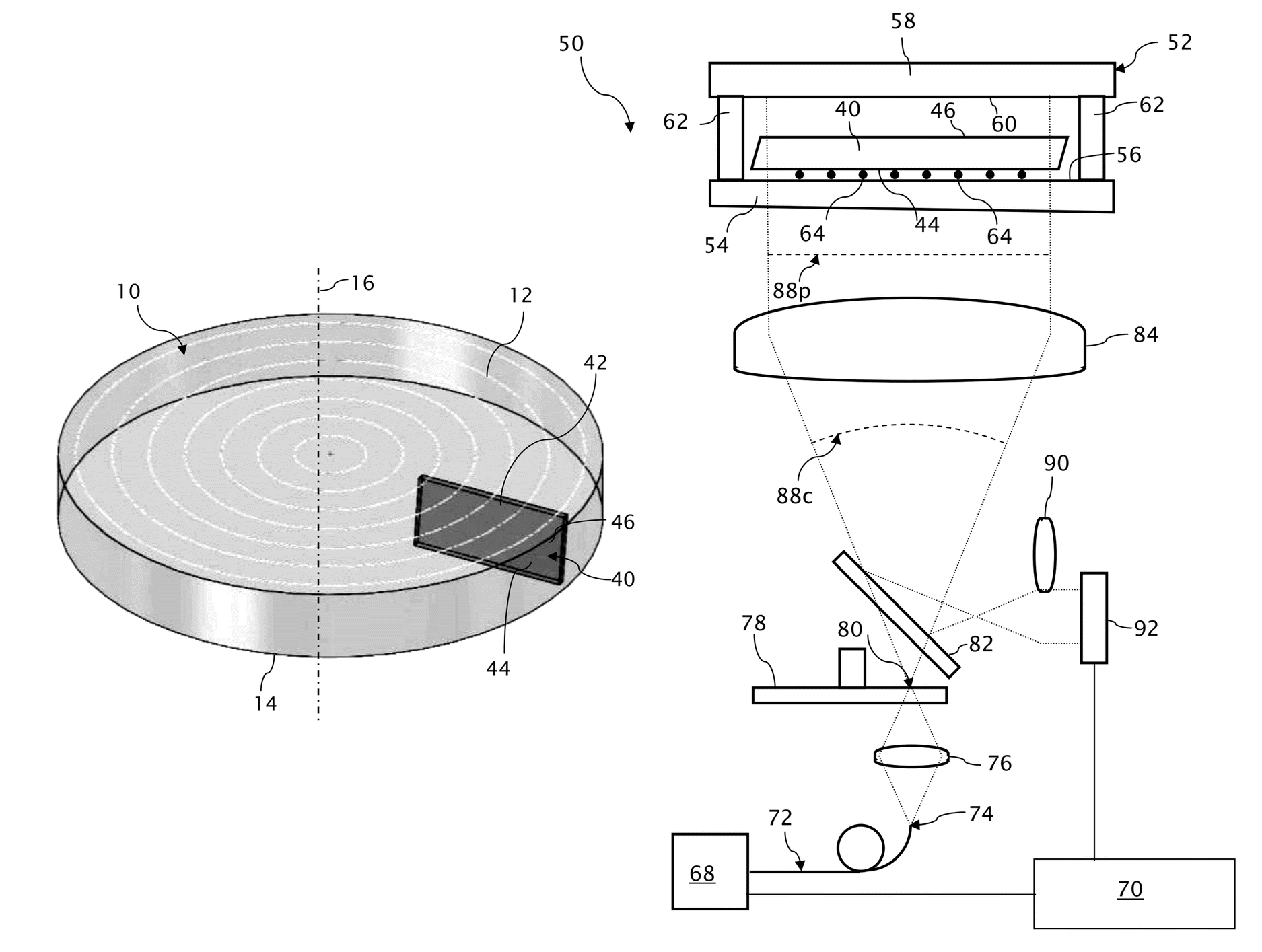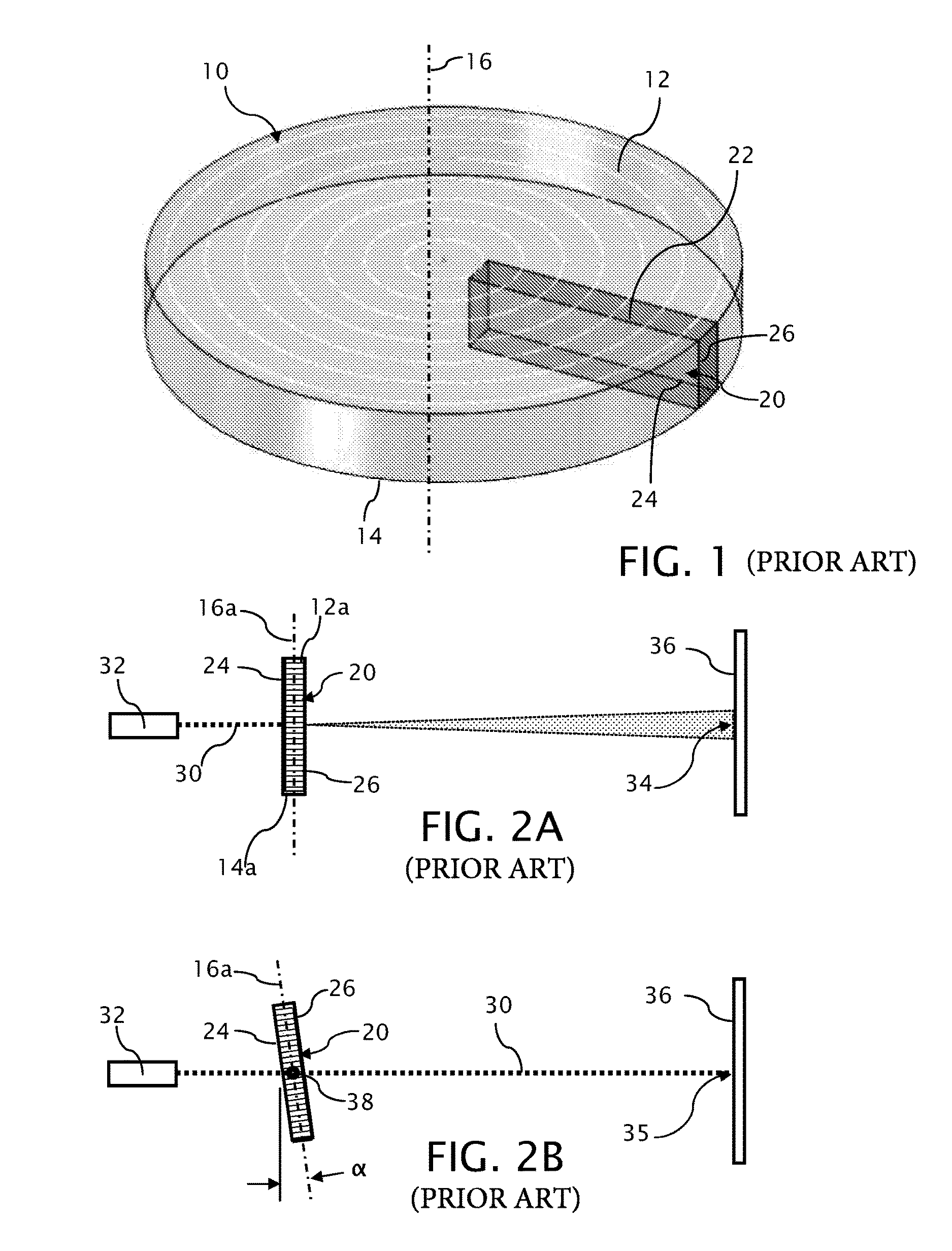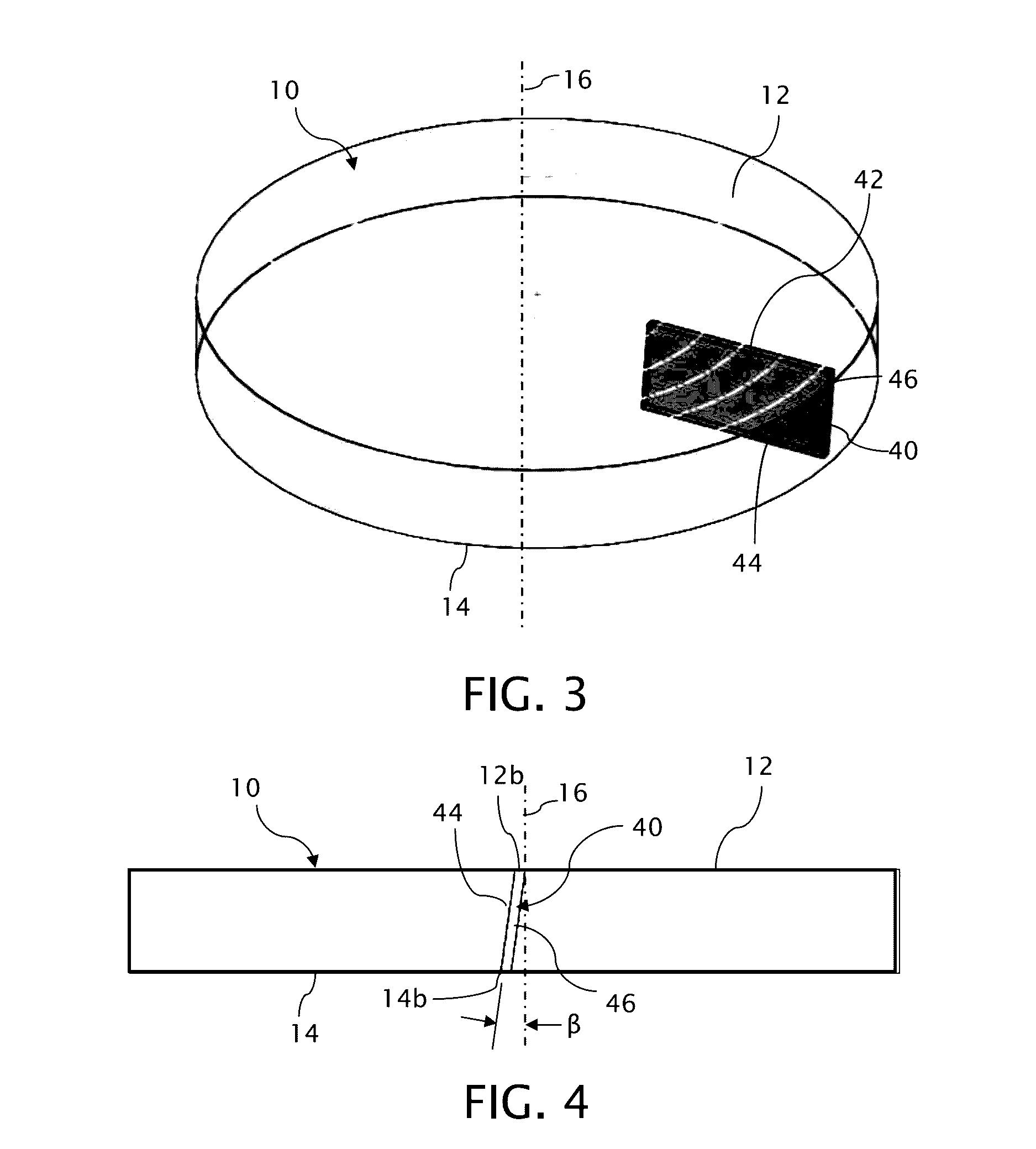Skewed sectional measurement of striated glass
a striated glass and sectional measurement technology, applied in the field of striated glass thickness and group index variation measurement, can solve the problems of limited spatial resolution of measurements, limited techniques, and limited and achieves general insufficient characterization of striae only to qualify glass materials
- Summary
- Abstract
- Description
- Claims
- Application Information
AI Technical Summary
Benefits of technology
Problems solved by technology
Method used
Image
Examples
Embodiment Construction
[0027]A conventional boule 10 of titania-silica ultra-low expansion glass, such as Corning's ULE® glass, Corning Code 7972, is shown in FIG. 1 having a top surface 12, a bottom surface 14 and a center axis 16. During manufacture of the boule 10, the ultra-low expansion glass is deposited in the direction of center axis 16 from the bottom surface 14 to the top surface 12 forming periodic striae oriented in substantial alignment with planes normal to an center axis 16 of the boule 10.
[0028]Fabricator requirements for identifying usable volumes within the boule include measurements of the coefficient of thermal expansion (CTE) and crossover temperature (Tzc), which can be derived from measurements of absolute index and index homogeneity. The invention, among its various objectives, provides for optically measuring absolute index and index homogeneity to a high resolution for qualifying volumes of the boule for various intended uses.
[0029]Interferometric techniques can provide high reso...
PUM
| Property | Measurement | Unit |
|---|---|---|
| skew angle | aaaaa | aaaaa |
| skew angle | aaaaa | aaaaa |
| rotational angle | aaaaa | aaaaa |
Abstract
Description
Claims
Application Information
 Login to View More
Login to View More - R&D
- Intellectual Property
- Life Sciences
- Materials
- Tech Scout
- Unparalleled Data Quality
- Higher Quality Content
- 60% Fewer Hallucinations
Browse by: Latest US Patents, China's latest patents, Technical Efficacy Thesaurus, Application Domain, Technology Topic, Popular Technical Reports.
© 2025 PatSnap. All rights reserved.Legal|Privacy policy|Modern Slavery Act Transparency Statement|Sitemap|About US| Contact US: help@patsnap.com



